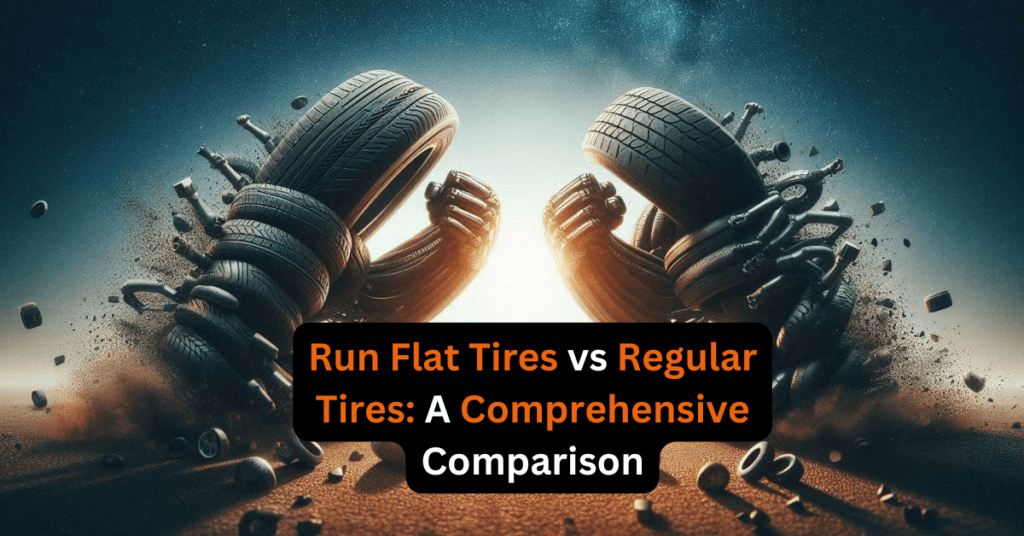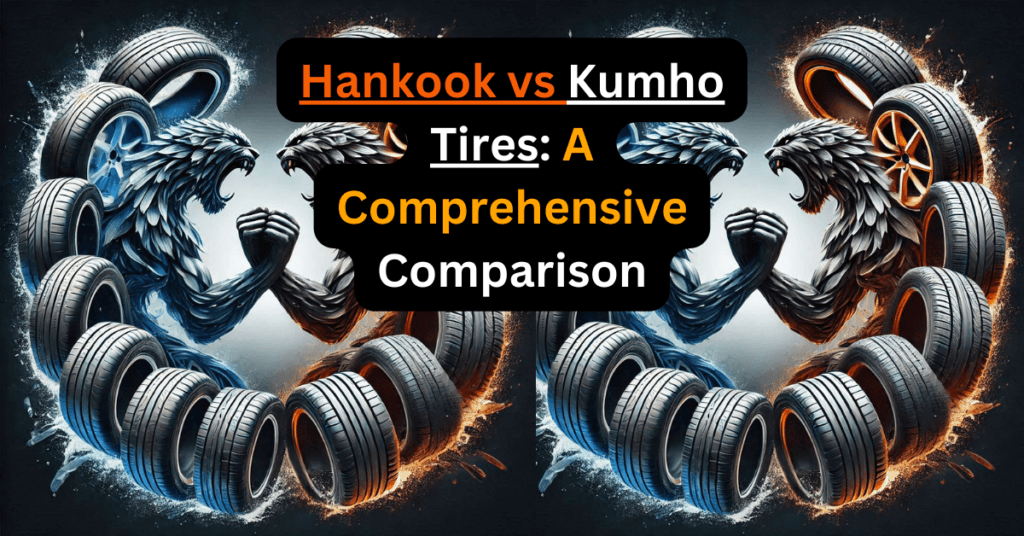As someone who’s spent years testing various tire types in different conditions, I can tell you that choosing between all-season and winter tires is more nuanced than many drivers realize. Both tire types have their strengths and weaknesses, and understanding these differences is crucial for making an informed decision that prioritizes your safety and driving experience.
Understanding All-Season Tires
All-season tires are designed to provide adequate performance across a wide range of conditions, from dry summer roads to light winter weather. They’re a popular choice for many drivers because of their versatility and convenience.
Compound Composition
The rubber compound used in all-season tires is formulated to maintain it’s properties across a broad temperature range. This harder compound contributes to longer tread life and better fuel efficiency, making all-season tires an attractive option for drivers in moderate climates.
However, this compromise in compound softness means that all-season tires begin to lose their effectiveness as temperatures drop below 7°C (45°F). At these lower temperatures, the rubber becomes less pliable, reducing it’s ability to conform to road surfaces and maintain optimal grip.
Tread Pattern Design
All-season tires typically feature a balanced tread design that aims to provide good performance in both dry and wet conditions. The tread pattern usually includes:
- Larger tread blocks for stability and handling
- Smaller grooves for water evacuation
- Moderate siping (small slits in the tread blocks) for some light snow traction
This design allows all-season tires to handle a variety of weather conditions reasonably well, but it doesn’t excel in any particular area. The jack-of-all-trades nature of all-season tires means they can handle light snow, but they’re not optimized for severe winter conditions.
Winter Tires
Winter tires, also known as snow tires, are specifically engineered to provide superior performance in cold weather conditions, including snow, ice, and freezing temperatures.
Advanced Rubber Compounds
The key to winter tire performance comes from their specialized rubber compounds. These compounds stay soft and pliable even in freezing temperatures, allowing the tire to maintain flexibility and grip on cold road surfaces.
This softer compound is crucial for maintaining traction on icy or snow-covered roads. It allows the tire to conform to the texture of the road surface, providing better grip and control in challenging winter conditions.
Aggressive Tread Patterns
Winter tires feature tread patterns that are specifically designed to handle snow, ice, and slush. Key elements of winter tire tread designs include:
- Deeper grooves to channel snow and slush away from the tire’s contact patch
- Increased number of sipes, creating thousands of extra biting edges for improved traction on snow and ice
- Wider and more many lateral grooves to enhance grip during cornering on slippery surfaces
These design features work together to dramatically improve traction, handling, and braking performance in winter conditions.
Performance Comparison: All-Season vs Winter Tires
To truly understand the differences between all-season and winter tires, it’s essential to look at their performance in various conditions.
Braking Distance
One of the most critical aspects of tire performance is braking distance, especially in emergency situations. Numerous studies have consistently shown that winter tires significantly outperform all-season tires in cold weather conditions.
A 2011 study conducted by Test World in Finland demonstrated that premium winter tires stopped 31 meters shorter than premium all-season tires on packed snow when braking from 50 km/h.
This difference in stopping distance can be the difference between avoiding an accident and being involved in a serious collision.
Be aware that this performance advantage isn’t limited to snow-covered roads. Winter tires also provide superior braking performance on cold, dry pavement compared to all-season tires.
As temperatures drop, the harder compound of all-season tires becomes less effective, while winter tires maintain their grip.
Handling and Cornering
While straight-line braking is crucial, the ability to maintain control during cornering and sudden maneuvers is equally important for overall safety. Winter tires excel in this area, providing better grip and stability in cold conditions.
The softer rubber compound and specialized tread pattern of winter tires allow them to maintain better contact with the road surface, reducing the risk of skidding or losing control.
This is particularly important when navigating turns on snow-covered or icy roads, where the risk of losing traction is highest.
All-season tires, while adequate for most conditions, may struggle to provide the same level of control in cold weather. The harder compound and less aggressive tread pattern can lead to reduced grip and increased risk of sliding during cornering or sudden maneuvers.
Acceleration and Traction
Getting moving on slippery surfaces can be challenging, and this is another area where winter tires shine. The aggressive tread patterns and softer compounds of winter tires provide superior traction when accelerating on snow or ice.
All-season tires, with their more balanced tread design, can struggle to find grip on slippery surfaces. This can lead to wheel spin and difficulty getting started, particularly on inclines or in deep snow.
Practical Considerations
While performance is crucial, there are other factors to consider when choosing between all-season and winter tires.
1. Cost and Convenience
One of the main arguments in favor of all-season tires is the convenience and perceived cost-effectiveness they offer. With a set of all-season tires, drivers can avoid the hassle and expense of seasonal tire changes.
However, it’s important to consider the long-term costs and benefits. While winter tires represent an extra upfront cost, they can actually save money in the long run:
- By using winter tires during the cold months, you extend the life of your all-season tires.
- The improved safety and performance of winter tires can potentially prevent costly accidents and repairs.
- Some insurance companies offer discounts for using winter tires, which can offset the cost over time.
2. Storage and Maintenance
For those who opt for separate sets of winter and all-season (or summer) tires, storage becomes a consideration. Proper tire storage is crucial for maintaining the integrity and performance of your tires when they’re not in use.
Ideally, tires should be stored in a cool, dry place away from direct sunlight and sources of ozone (like electric motors). Many tire shops offer seasonal tire storage services for a fee, which can be a convenient option for those without adequate storage space.
Regular maintenance is important for both all-season and winter tires. This includes:
- Proper inflation: Check tire pressure regularly, as it can fluctuate with temperature changes.
- Regular rotation: Rotate tires according to the vehicle manufacturer’s recommendations to confirm even wear.
- Alignment checks: Proper alignment helps prevent uneven wear and maintains optimal handling.
Winter tires, because of their softer compound, may wear more quickly if used in warm conditions. It’s important to switch back to all-season or summer tires as temperatures consistently rise above 7°C (45°F) to prevent premature wear and maintain optimal performance.
Making the Right Choice
Choosing between all-season and winter tires depends on several factors. Here’s what you need to consider:
1. Climate Considerations
Your local climate plays a significant role in determining which tire type is best for your vehicle:
- Mild winters: If you live in an area with mild winters where temperatures rarely drop below freezing and snowfall is infrequent, all-season tires may be enough.
- Severe winters: For regions that experience regular snowfall, icy conditions, or prolonged periods of cold temperatures, winter tires are strongly recommended.
- Moderate winters: Even in areas with moderate winter conditions, the improved safety and performance of winter tires can provide peace of mind and potentially prevent accidents.
2. Driving Habits and Needs
Consider your personal driving habits and needs when making your decision:
- Rural driving: If you often drive in rural areas, on unplowed roads, or during severe weather conditions, winter tires are likely the best choice.
- Urban driving: For urban drivers who can avoid driving in the worst conditions and have access to well-maintained roads, all-season tires might be adequate.
- Commuting: If you have a long daily commute or often travel during winter months, the added safety of winter tires can be invaluable.
3. Vehicle Type
The type of vehicle you drive can also influence your tire choice:
- Front-wheel drive: These vehicles generally handle winter conditions better than rear-wheel drive, but winter tires can still provide a significant performance boost.
- All-wheel drive or four-wheel drive: While these systems improve traction, they don’t help with braking. Winter tires can enhance the overall winter performance of AWD and 4WD vehicles.
- Performance vehicles: Sports cars and other high-performance vehicles often come with summer tires, which are dangerous in winter conditions. For these vehicles, a separate set of winter tires is essential for cold-weather driving.
The All-Weather Alternative
For those seeking a compromise between the performance of winter tires and the convenience of all-season tires, all-weather tires are worth considering. These tires are designed to provide better winter performance than traditional all-season tires while still offering acceptable performance in warmer conditions.
All-weather tires feature:
- Rubber compounds that stay more flexible in cold temperatures compared to all-season tires
- Tread patterns with more aggressive snow and ice traction features
- The three-peak mountain snowflake symbol on the sidewall, indicating they meet specific snow traction performance requirements
While all-weather tires can be a good middle ground, they still don’t match the winter performance of dedicated winter tires. They’re best suited for drivers in areas with mild to moderate winters who want improved cold-weather performance without the need for seasonal tire changes.
Legal Requirements and Recommendations
In some regions, the use of winter tires is mandated by law during certain months of the year. For example:
- In Quebec, Canada, winter tires are required on all passenger vehicles from December 1 to March 15.
- Many European countries have similar laws or need the use of winter tires in certain conditions.
Even where not legally required, many transportation authorities strongly recommend the use of winter tires in areas that experience severe winter weather.
Environmental Impact
The choice between all-season and winter tires can have environmental implications:
- Fuel efficiency: All-season tires generally offer better fuel efficiency because of their harder compounds and less aggressive tread patterns. However, the difference is minimal when winter tires are used only during suitable seasons.
- Tire waste: Using separate sets of tires for winter and summer can potentially increase tire waste. However, proper tire rotation and storage can extend the life of both sets, potentially offsetting this concern.
- Safety: The improved safety of winter tires in cold conditions can prevent accidents, which have their own environmental costs in terms of vehicle damage and potential fuel or fluid spills.
Installation and Changeover
If you decide to use winter tires, proper installation is crucial:
- Always install a full set of four winter tires. Using only two can create an imbalance in traction that can be dangerous.
- Have your tires installed by a professional who can confirm proper mounting and balancing.
- Consider purchasing a separate set of wheels for your winter tires to make seasonal changeovers easier and protect your primary wheels from winter damage.
Plan to change to winter tires when temperatures consistently fall below 7°C (45°F), typically in late fall. Switch back to all-season or summer tires in spring when temperatures rise above this threshold.
Tire Technology Advancements
Tire technology is constantly evolving, with manufacturers developing new compounds and tread designs to improve performance:
- Multi-cell compounds: Some winter tires now use compounds with microscopic bubbles that help evacuate the thin layer of water that forms between the tire and ice, improving traction.
- Adaptive tread patterns: New designs allow tread blocks to change shape as they wear, maintaining performance throughout the tire’s life.
- Run-flat technology: Available in both all-season and winter varieties, run-flat tires allow you to continue driving for a limited distance after a puncture, which can be particularly valuable in harsh winter conditions.
Key Takeaways
- Winter tires provide superior performance in cold, snowy, and icy conditions because of their specialized rubber compounds and tread patterns.
- All-season tires offer convenience and adequate performance in a variety of conditions but may struggle in severe winter weather.
- The choice between all-season and winter tires depends on your local climate, driving habits, and personal preferences.
- Winter tires can significantly reduce braking distances and improve handling in cold conditions, potentially preventing accidents.
- Consider the long-term costs and benefits, including tire life, fuel efficiency, and safety, when making your decision.
- All-weather tires offer a compromise for those in milder winter climates but don’t match the performance of dedicated winter tires in severe conditions.
- Always follow local laws and recommendations regarding winter tire use.
- Proper storage, maintenance, and timely changeover are crucial for maximizing the benefits of winter tires.
Frequently Asked Questions
When should I switch to winter tires?
Switch to winter tires when temperatures consistently fall below 7°C (45°F), typically in late fall or early winter.
Do I need winter tires if I have all-wheel drive?
Yes, winter tires are still useful for all-wheel drive vehicles. AWD improves traction but doesn’t help with braking or cornering on slippery surfaces.
How long do winter tires last?
With proper care and seasonal use, winter tires typically last 3-4 seasons or about 30,000-40,000 kilometers.
Can I use winter tires year-round?
It’s not recommended to use winter tires year-round. They wear quickly in warm weather and don’t perform as well as all-season or summer tires in dry, warm conditions.
Are studded tires better than regular winter tires?
Studded tires can provide better traction on ice but are noisier and can damage road surfaces. They’re only legal in certain areas and conditions.
How much do winter tires improve stopping distance?
Studies show winter tires can reduce stopping distances by up to 30-40% compared to all-season tires in snowy or icy conditions.
Do all-weather tires perform as well as winter tires?
All-weather tires offer better winter performance than all-season tires but don’t match the capabilities of dedicated winter tires in severe conditions.
Can I mix winter tires with all-season tires?
No, it’s not safe to mix tire types. Always use a matching set of four winter tires for optimal safety and performance.
How do I store my tires when not in use?
Store tires in a cool, dry place away from direct sunlight and ozone sources. Use tire bags or stack them horizontally if unmounted.
Are winter tires worth the investment?
For those living in areas with cold winters and frequent snow or ice, winter tires are a valuable investment in safety and performance that can potentially prevent costly accidents.




